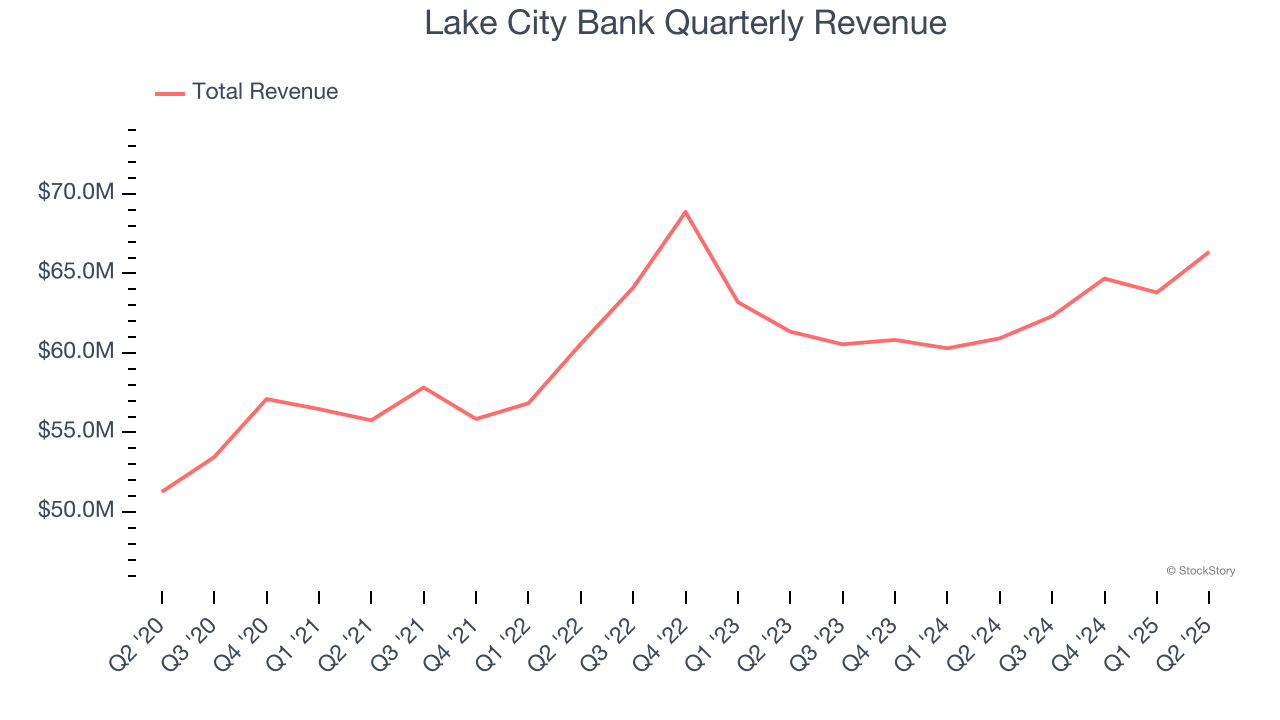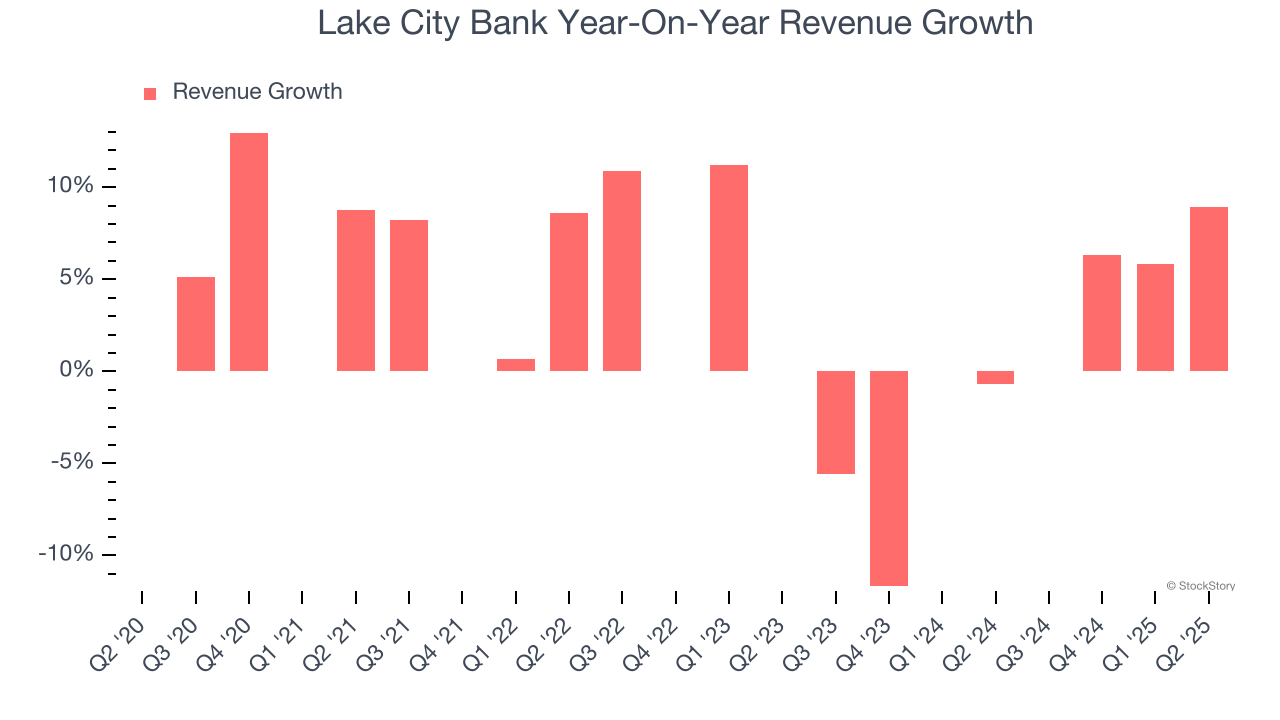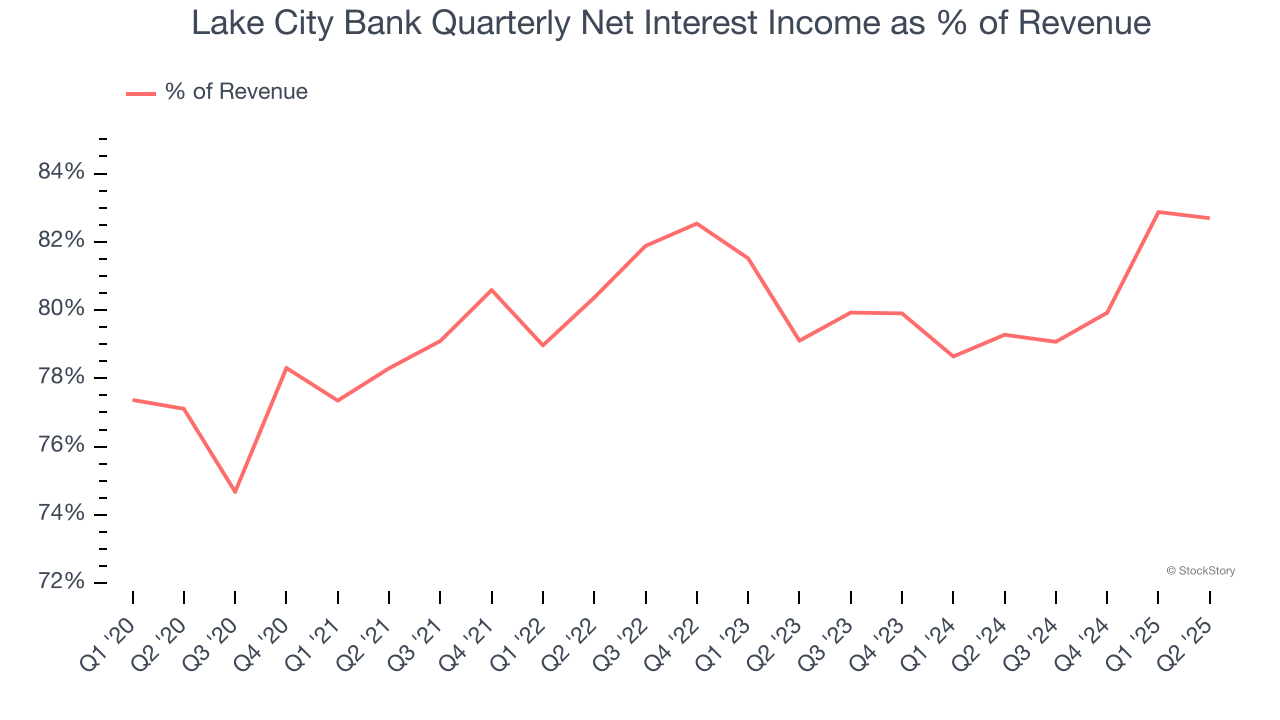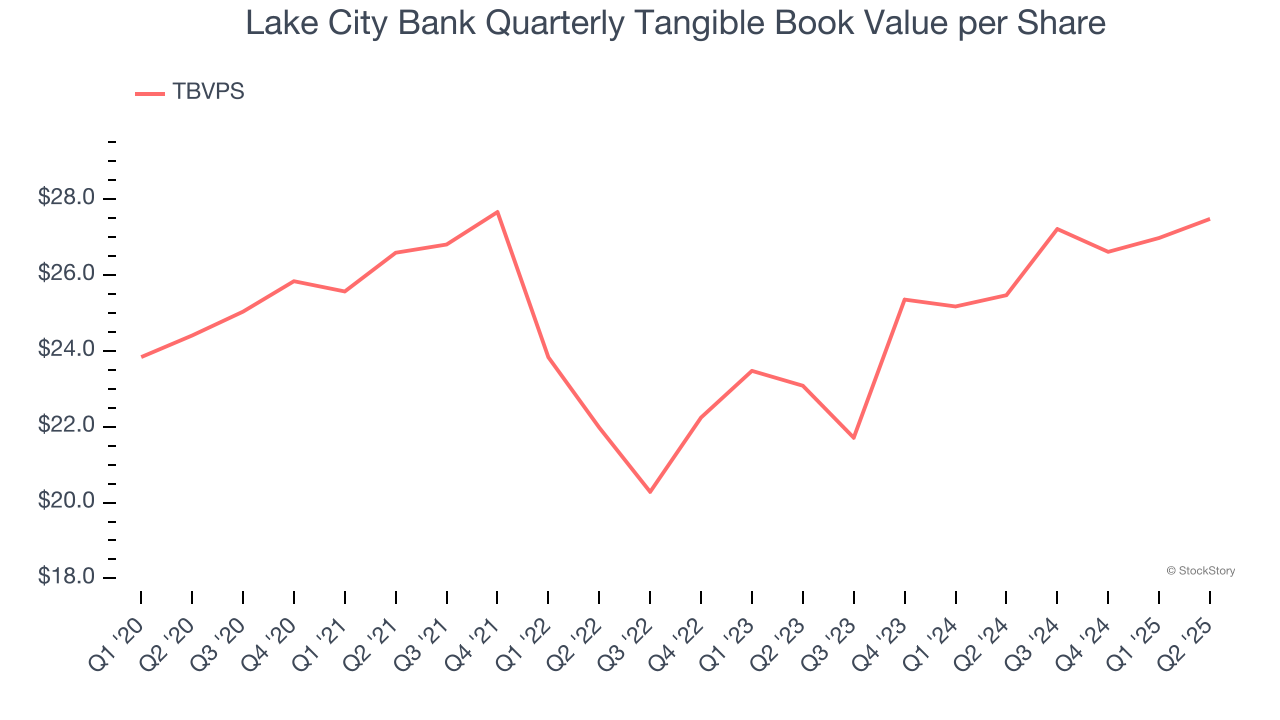
Regional banking company Lakeland Financial (NASDAQGS:LKFN) met Wall Street’s revenue expectations in Q2 CY2025, with sales up 8.9% year on year to $66.36 million. Its GAAP profit of $1.04 per share was 7.7% above analysts’ consensus estimates.
Is now the time to buy Lake City Bank? Find out by accessing our full research report, it’s free.
Lake City Bank (LKFN) Q2 CY2025 Highlights:
- Net Interest Income: $54.88 million vs analyst estimates of $55.78 million (13.6% year-on-year growth, 1.6% miss)
- Net Interest Margin: 3.4% vs analyst estimates of 3.4% (25 basis point year-on-year increase, in line)
- Revenue: $66.36 million vs analyst estimates of $66.14 million (8.9% year-on-year growth, in line)
- Efficiency Ratio: 45.9% vs analyst estimates of 48.4% (2.5 percentage point beat)
- EPS (GAAP): $1.04 vs analyst estimates of $0.97 (7.7% beat)
- Market Capitalization: $1.64 billion
“Our capital position is strong and provides capacity for continued organic growth of our balance sheet as well as continued growth of our common stock dividend to shareholders,” stated Kristin L. Pruitt, President.
Company Overview
Dating back to 1872 and deeply rooted in Indiana's communities, Lakeland Financial Corporation (NASDAQ:LKFN) operates Lake City Bank, providing commercial and consumer banking services throughout Northern and Central Indiana.
Sales Growth
From lending activities to service fees, most banks build their revenue model around two income sources. Interest rate spreads between loans and deposits create the first stream, with the second coming from charges on everything from basic bank accounts to complex investment banking transactions.
Unfortunately, Lake City Bank’s 4.9% annualized revenue growth over the last five years was mediocre. This was below our standard for the bank sector and is a poor baseline for our analysis.

Long-term growth is the most important, but within financials, a half-decade historical view may miss recent interest rate changes and market returns. Lake City Bank’s recent performance shows its demand has slowed as its revenue was flat over the last two years.  Note: Quarters not shown were determined to be outliers, impacted by outsized investment gains/losses that are not indicative of the recurring fundamentals of the business.
Note: Quarters not shown were determined to be outliers, impacted by outsized investment gains/losses that are not indicative of the recurring fundamentals of the business.
This quarter, Lake City Bank grew its revenue by 8.9% year on year, and its $66.36 million of revenue was in line with Wall Street’s estimates.
Net interest income made up 79.7% of the company’s total revenue during the last five years, meaning lending operations are Lake City Bank’s largest source of revenue.

While banks generate revenue from multiple sources, investors view net interest income as the cornerstone - its predictable, recurring characteristics stand in sharp contrast to the volatility of non-interest income.
Unless you’ve been living under a rock, it should be obvious by now that generative AI is going to have a huge impact on how large corporations do business. While Nvidia and AMD are trading close to all-time highs, we prefer a lesser-known (but still profitable) stock benefiting from the rise of AI. Click here to access our free report one of our favorites growth stories.
Tangible Book Value Per Share (TBVPS)
The balance sheet drives banking profitability since earnings flow from the spread between borrowing and lending rates. As such, valuations for these companies concentrate on capital strength and sustainable equity accumulation potential.
Because of this, tangible book value per share (TBVPS) emerges as the critical performance benchmark. By excluding intangible assets with uncertain liquidation values, this metric captures real, liquid net worth per share. On the other hand, EPS is often distorted by mergers and flexible loan loss accounting. TBVPS provides clearer performance insights.
Lake City Bank’s TBVPS grew at a sluggish 2.4% annual clip over the last five years. However, TBVPS growth has accelerated recently, growing by 9.1% annually over the last two years from $23.08 to $27.48 per share.

Over the next 12 months, Consensus estimates call for Lake City Bank’s TBVPS to grow by 8.7% to $29.86, decent growth rate.
Key Takeaways from Lake City Bank’s Q2 Results
It was encouraging to see Lake City Bank beat analysts’ EPS expectations this quarter despite in line revenue. On the other hand, its net interest income missed. Overall, this was a mixed quarter. The stock remained flat at $64.26 immediately following the results.
Should you buy the stock or not? We think that the latest quarter is only one piece of the longer-term business quality puzzle. Quality, when combined with valuation, can help determine if the stock is a buy. We cover that in our actionable full research report which you can read here, it’s free.
